In-depth review: Apple's third generation 1080p Apple TV and Software Update 5
Apple TV (3rd generation)
3.0 / 5Last updated
Jump to a different section
In terms of features, the latest Apple TV is really only different from the previous iOS based $99 model it replaces in that it can handle 1080p video and that it has an additional wireless antenna for improved WiFi reception that can support faster access to 802.11n wireless networks.
In order to play 1080p video, Apple replaced the previous model's A4 chip with a single-core A5. This gives it computational power somewhere between A4 class devices (including the original Apple TV, iPad and iPhone 4) and last year's dual core A5 products (iPad 2 and iPhone 4S).
This is the opposite direction Apple took with the new iPad's A5X, which took the basic design of the A5 and added twice as many graphics cores. Like the new A5X iPad, the single core A5 variant in Apple TV is given twice as much system RAM as the previous generation.
While the second generation Apple TV had 256MB, the newest model has 512MB, giving the system more breathing room for pushing around larger (and better quality) videos. Additional detail on the new Apple TV's hardware capabilities is presented on the final page of this review, after an overview of its new software features.
While the third generation Apple TV has added horsepower to handle higher quality 1080p video, its feature set is available to the millions of existing iOS Apple TV users via a free version 5 software update, offering a refreshed user interface; iCloud integration that enables users to access previous movie, TV and music purchases directly from iTunes; new photo screen saver formats for your photos or the included professional photography of National Geographic and on-device signup and login for services ranging from Netflix to Flickr.
The new user interface presents five main navigation targets: Movies, TV Shows, Music, Computers and Settings.
Scroll down, and the system presents 13 additional services to navigate, in a new app-like button interface similar to Nintendo Wii channels.
Previous Apple TV software was more menu-centric. The new user interface makes it easier to start toward the direction you want, and makes a variety of services that were once hidden within menu options more visible.
On page 2 of 7: iTunes Movies, Trailers & Netflix
Jump to a different section
Select the Movies button and you'll see larger art representing your Purchased movies or Rentals and other Top Movies available for purchase or rent.
Thanks to iTunes in the Cloud, Apple TV is now a lot more useful, as you can call up the content you've bought without having to figure out how to shuffle around gigabyte sized files from your desktop iTunes to the box. There's little storage on the box itself, so rather than working like an iPod classic, the new device streams content.
This also has an impact on how it can be used. To download and watch rented movies or authorize cloud purchases, you need a network connection. If you preferred the old model of having a box storing all your content you could watch from your cabin in the mountains, you'll have to find an original first generation Apple TV that worked more like an iPod, incorporating a hard disk for gigabytes of storage.
Click the Movies button and you get six movie subcategories. Purchased shows everything you've ever bought, categorized into genres. Note that some studios' movie content is not yet possible to download from iTunes, although the contractual movie rights situation is being worked out.
Top Movies presents popular titles available, including new releases and other highlighted content.
Genius presents recommendations based on movies you've already bought or watched.
Genres lists iTunes content by subject or audience. Click on a genre and Apple TV presents a variety of subcategories within that type of movie.
Select a specific title, and you get a synopsis, trailer preview, the option to buy or rent (not all movies are available as both purchases and rentals), related content, and a "more" option that presents reviews from Rotten Tomato critics and customers.
The Search option lets you type what you're looking for, either with the directional buttons of the included remote, or from your iOS device using Apple's free Remote app (which requires connecting your Apple TV to the Home Sharing Apple ID you use in iTunes).
A final Trailers option lets you watch previews of movies in iTunes, as well as theatrical movies that aren't yet available to buy or watch. The separate, top-level Trailers icon provides identical access to this page as well.
Netflix features, introduced with the second generation Apple TV just over a year ago, enable digital subscribers to access content in their Instant Queue using an interface in common with the rest of Apple TV.
The only thing that's changed with the latest Apple TV is the ability to stream higher quality 1080p content from Netflix. Select content also includes Dolby Digital 5.1 surround sound audio (as does most iTunes content). You can now also sign up for Netflix using your Apple ID.
Apple TV provides one of the best interfaces for Netflix content, which is now priced at $8 per month for the digital downloads only plan. This provides a cheap alternative to iTunes for watching unlimited movies and TV Shows, although the overall selection is somewhat limited. Apple lacks any support for alternative video sources, including Amazon or Microsoft's video on demand and Google's YouTube theatrical movies.
On page 3 of 7: TV Shows & Networks
Jump to a different section
Select the second TV Shows button and you'll see square art representing your Purchased shows and other Top TV Shows available for purchase.
After briefly experimenting with the option to rent TV shows, Apple canned the idea and now only sells TV content. Netflix also offers access to its own library of TV shows, but these are all found within the Netflix app. There's no option to download TV shows from other sources, including websites like Hulu.
That was the strategy originally initiated by Google TV, which resulted in a backlash from TV studios that simply blocked Google from accessing their content for use on TV, something that violated their existing structure of contractual programing rights negotiated between cable operators and broadcasters.
Apple has been careful to keep publishers involved in its efforts to make their content available on the Mac, iOS devices, and on Apple TV. That process has taken more time, but has now resulted in a quite flexible array of options, where users can buy individual shows or a Season Pass to a year's episodes, and then download these to any iTunes compatible device as needed via iCloud.
Click the TV Shows button and you get six movie subcategories. Purchased shows everything you've bought, categorized into genres. Top TV Shows similarly presents categories of available episodes in iTunes.
Genius makes suggestions based on previous purchases, and Genres similarly presents shows by topic, type or audience.
Unique to TV Shows, Networks presents shows by the producing network.
Select Comedy Central's Adult Swim for example, and you get all the shows they air that are available on iTunes. Click a show for detail and you get a synopsis, an option to buy specific episodes, add the show to your favorites, or buy a Season Pass.
On page 4 of 7: Music, iTunes Home Sharing & Radio
Jump to a different section
In addition to iTunes and Netflix video content, Apple TV also serves as a way to play music from iTunes in the Cloud, your local iTunes PC libraries via Home Sharing, or from a variety of Internet Radio stations.
Click on Music and, if you've set up iTunes Match, you can download purchases and the rest of your iTunes music library directly to your Apple TV.
Without paying for iTunes Match, you can still access music (and movies, TV, podcasts and photos) on your local iTunes PC libraries from the Computers button.
Click Computers and you can navigate through the iTunes libraries you've connected to your Home Sharing Apple ID. When you set up Apple TV, you simply supply the same ID and you'll automatically gain access to the content each iTunes system you've connected under the Settings button's Computers option.
To view photos stored on your local PCs, you have to configure this on your computers within iTunes.
The iTunes Advanced menu item for Photo sharing appears to be tacked on to graft photos into the iTunes experience. It does offer to either share photos from iPhoto (allowing you to share everything or just specific Albums, Events and Faces), or from a selected folder of images (the only option available on Windows PCs). You can also opt to share videos stored within the photo collection.
There are additional photo sharing apps detailed later on page 6, including iCloud Photo Stream, MobileMe galleries, Flickr, and slide show options that can draw from your own photos, National Geographic or Flickr galleries, or from iOS devices using AirPlay.
In addition to your own music library, Apple TV also lets you stream Internet Radio. Navigate to the Radio button, click, then select a genre and pick a specific channel.
While supporting free Internet radio feeds, Apple TV doesn't directly support popular apps such as Pandora or AOL radio, although iOS apps (and iTunes on your PC) can push audio wirelessly to Apple TV via AirPlay.
On page 5 of 7: AirPlay, Gaming, Sports & News apps
Jump to a different section
Also found under Settings is the configuration for AirPlay. After you activate it (and optionally set an access password), you can wirelessly beam music, videos or photo slideshows from iTunes or an iPod touch, iPhone or iPad by selecting the playback AirPlay button.
It's interesting that Apple only introduced AirPlay over the past year. At last year's introduction of iPad 2, the company was offering dongle cables to allow users to plug their iPad or iPhone into an HDTV via HDMI or VGA. Wireless distribution is a lot more convenient, and Apple's implementation of AirPlay works very well, something its competitors haven't come very close to matching.
You can also use AirPlay Mirroring to send virtually everything on the screen of your iPhone 4S or iPad 2 or newer iPad. Mirroring is accessed by double-clicking the Home button of your mobile device and swiping to the right to bring up playback widget controls.
AirPlay and AirPlay Mirroring are likely to be one of the most attractive features of Apple TV, broadening its appeal beyond living room users who want to play iTunes content to also include educators and business users who want to present what they're doing on a larger screen.
Another application of AirPlay relates to gaming. Most iOS games "just work" with AirPlay Mirroring (depicted below: "Batman Arkham City Lockdown" for iPad).
However, a variety of titles are making unique use of AirPlay to create interactive games that present one scene on your HDTV while showing a control interface on the iOS device itself. Examples include Firemint's "Real Racing 2 HD" game and Apple's own Keynote.
Apple will also be bringing AirPlay Mirroring to compatible Macs (2011 or newer) with the release of OS X Mountain Lion later this year.
Apple now gives more prominent attention to third party service apps the company has bundled with Apple TV for some time now. Among these apps are sports scores, game recaps and standing information for Major League Baseball, National Basketball Association and National Hockey League.
Click on one of the three sports buttons and you get a listing of options ranging from Today's Games to Standings, Game Recaps, Team information, and options to buy premium video content from iTunes. Pictured below is MLB.
Without signing in, you can still view Standings and Game Highlights videos (pictured below for the NHL) as well as Team games detail for recent and upcoming games (shown below bottom for the Boston Bruins).
Apple has also given more prominent attention to Wall Street Journal Live, which presents live news feeds (when available), as well as a library of podcast-style, on demand content supported by advertising.
On page 6 of 7: Photos, Podcasts & video apps
Jump to a different section
As noted earlier, you can share photos on your PC from iTunes via Home Sharing, and you can also send slide shows you've composed on an iOS device to Apple TV via AirPlay.
Apple TV can also tap into photos you've stored in the cloud, either using the old MobileMe gallery feature or iCloud's new Photo Stream, which iOS 5 devices and the latest version of iPhoto can automatically populate with the pictures you take from any of your devices.
Presenting photos from Photo Stream, AirPlay or Home Sharing are all easy, fun ways to show off your pictures on your HDTV (and they look a lot better than our photographs of the TV screen represent), but Apple also offers slideshow features similar to iPhoto's to help add some extra flair.
Most of the slideshow options from iPhoto are available, including a selection of "Classic" transitions (optionally using Ken Burns animations) or a new set of animated transitions including Snapshots, Shifting Tiles, Scrapbook, Reflections, Photo Wall, Photo Mobile, Origami and Flip-up.
iPhoto also has a Shatter transition effect and a map-based Places slideshow feature that Apple TV doesn't offer, and iPhoto also has some extra music options and other settings that Apple TV's slideshows do not. It's kind of odd that iPhoto doesn't offer any way to push its fancier slideshows to Apple TV via AirPlay, but new Macs will be able to do this via AirPlay Mirroring when OS X Mountain Lion appears later this year.
You can configure, under Settings, an option to start a Screen Saver slideshow that can play back while you're streaming music. You can select pictures from iCloud, a local Home Sharing library, Flickr, or one of the professional photo galleries Apple provides, including a new set of pictures from National Geographic.
Using the new Flickr app button, you can both follow the photos posted by other users, or perform searches to create slideshows of pictures using search terms (here's a random selection of Apple TV photos from Flickr users, for example).
It's noteworthy that Apple TV's lack of a third party apps store means you can't view photos from services Apple hasn't created a client to view, including Google's Picasa service, Pinterest, Photobucket, Shutterfly, DeviantART, Imgur or image search via Microsoft's Bing or Google. There's also no client for browsing photos or other content from Facebook, and no support for viewing Twitter pictures.
Three additional apps provide alternative sources of videos: YouTube, Vimeo and Podcasts. Google's YouTube is geared primarily toward watching amateur videos and browsing them by popularity. Google has added support for viewing theatrical movies in YouTube, but the Apple TV client ignores these features.
Vimeo offers channels, feeds and categories, oriented more toward prosumer and professional video producers. Apple appears to be working to support Vimeo at the expense of YouTube, even offering Vimeo video sharing in OS X Mountain Lion without similar support for YouTube. This appears to be connected to Google's scaling back of its support for H.264 on YouTube and its threats to abandon iOS users entirely in its push to replace H.264 on the web with its own WebM video codec.
Apple has always supported the podcasting industry with Apple TV, and the latest version continues to offer the same access to a vast array of of episodic content. Oddly enough, there isn't an iTunes U app on Apple TV, although there's nothing from stopping you from watching iTunes U podcasts if you can find them. You can also stream them from your local iTunes libraries via Home Sharing for content you've already subscribed to or downloaded.
There doesn't seem to be any special showcasing of new 1080p podcast content. Given that Apple maintains the largest directory listing of Podcasts in iTunes, as well as managing the vast content library available through iTunes U, it's a bit of a mystery why the company isn't showing them off better in Apple TV.
On page 7 of 7: H.264 hardware capabilities, iTunes' 1080p vs Blu-ray disc, 3D, Apple TV advantages, where's the apps?
Jump to a different section
Beyond the jump in top end resolution from 720p to 1080p, the new Apple TV can now handle additional H.264 profile/levels: High (HiP) or Main Profile (MP) video up to level 4.0, and Baseline Profile (BP) up to level 3.0.
In the MPEG4 H.264 specification, "profiles" relate to a class of video aimed at a specific type of device. BP was designed for mobile devices, MP targeted standard definition HDTV broadcasts and HiP includes features intended for higher quality HDTV and Blu-ray applications. Within each profile, "levels" define a maximum frame rate and picture resolution, defining the minimum decoding power a particular device has.
The original "big" Apple TV introduced in 2007, powered by a low end Intel Pentium M chip and running a scaled down version of OS X Tiger, could only handle 720p video at 24 fps using "Progressive Main Profile." To serve 30 fps video, it had to scale back the top resolution to 960x540, a bit better than DVD quality (720x480).
The second generation Apple TV introduced in late 2010, powered by Apple's A4 ARM Cortex-A8 Application Processor and running iOS, had the horsepower to decode 30fps 720p video in the H.264 MP up to level 3.1 (14Mbps), or alternatively, 720p Motion-JPEG video.
The new third generation Apple TV, with its more powerful A5 ARM Cortex-A9 chip and twice the RAM, can now handle full motion, 30fps 1080p (1920x1080) at a bit rate up to 25Mbps. It retains compatibility with MPEG4 H.263 and M-JPEG video content, although it only uses the more efficient H.264 codec for playing 1080p content.
This gives the latest Apple TV the same class of specifications as the Blu-ray format in terms of resolution and frame rate. However, Blu-ray disc isn't constrained by file sizes the way video downloads are. Blu-ray disc can store 25GB per layer (with some disks now offering 3-4 layers), and it offers a maximum bit rate of 40Mbps (compared to the new Apple TV's 25Mbps, or DVD's 9.8Mbps bit rate).
Apple's iTunes video uses a much lower bit rate both to make downloads manageable and to limit the size movies take up on mobile devices, where storage is much more constrained. Full length 720p HD movies from iTunes are closer to 3-4 GB (up from about 1GB file sizes of iTunes' SD video). New 1080p iTunes content is about 1.5 times larger (4-6GB), despite delivering 2.25 times the pixels, thanks to more sophisticated compression available in H.264 HiP.
Higher bit rates enable higher quality video. While iTunes can't compete with Blu-ray on the high end, in practice iTunes 1080p content is now at least more competitive in terms of picture quality, given the added convenience and efficiency of downloads and mobile playback without an optical disc mechanism.
An analysis of 1080p TV shows Apple recently added to iTunes demonstrated a significant jump in picture detail, particularly in brighter scenes, over previous 720p HD content.
Apple's disc-free strategy with iTunes relies heavily upon the increased sophistication of H.264 video compression and the newly available decoding power afforded by the latest generation of chips. In contrast, Blu-ray disc offers so much storage that many discs use the much less efficient MPEG2 codec employed by DVD, because there's plenty of disc storage space to waste.
Blu-ray disc's far higher storage capacity means the format can handily outpace Apple TV on the high end in terms of picture quality. It can also deliver features such as 3D (which essentially provides two streams of HD video, one for each eye), something Apple has completely ignored even as HDTV makers have scrambled to offer 3D as a feature. Note that while Apple TV can't play 3D content, its output can be given artificial 3D treatment by many new 3D-capable HDTV sets.
Using a Samsung 3D HDTV set to apply 3D processing to basic iTunes content worked very well, particularly with animated content. The 3D processing in modern HDTVs is often at least as good as the phony 3D that is typically applied to many new movies in post production.
So if you're a fan of 3D, you don't have to wait for Apple to support it to get added depth to the content you can watch on Apple TV. You just need a TV that can add 3D effects to your 2D video. At the same time, whenever I have friends over and force them to watch 3D TV, they usually opt out of wearing the glasses after the novelty wears off in 15 minutes.
In other respects, Apple TV's advantage over creating a Blu-ray library is that it is smaller, doesn't require physical disc storage, and its movies can be shared between iTunes PCs and other iOS devices, something that Blu-ray can't do without the help of an additional digital copy format. Unlike discs, iTunes content can't be scratched or warped, and if you lose your copy you can download it again. iTunes content is generally much cheaper than Blu-ray disc, and sources such as Netflix and Podcasts provide even cheaper options.
Apple has also developed its own iTunes Extras format for delivering interactive content that works similar to the menus of DVD and BR. With a tenth of the file size of Blu-ray disc, Apple isn't really aiming to compete with the Blu-ray format directly. Instead, it's really offering a more convenient format to replace DVD as an alternative to Blu-ray, offering better quality picture than DVD with the advantages of digital distribution and its other Internet and iTunes library sharing features.
So far, Apple's digital downloads strategy seems to be gaining traction faster than HD disc formats, including the now dead Microsoft-led HD-DVD format and the Sony-led Blu-ray format (which Apple was involved with from the start, but which it has never supported for playback on the Mac or other devices). The boost in picture quality enabled by its A5 generation of iOS devices appears set to make iTunes' 1080p content an even more aggressive threat to Blu-ray adoption going forward.
While attempting to woo customers toward its digital downloads in iTunes rather than another disc format, Apple has also sweetened the appeal of Apple TV by adding support for the app-like features previous detailed above.
Over the past year, Apple's new AirPlay feature has also given Apple TV a new killer app. The second generation Apple TV can wirelessly stream 720p video from iTunes PCs and iOS devices, while the latest Apple TV can stream 1080p video from devices that support that resolution (including the new iPad and iPhone 4S). Those devices can also support AirPlay Mirroring at the new Apple TV's 1080p resolution. Modern 2011 or later Macs should also be able to support AirPlay Mirroring under OS X Mountain Lion.
The latest version of Apple TV software, described as 5.0, is based on iOS 5 but conspicuously lacks the ability to add new third party apps. It also offers fewer of the built in features of its iOS 5 peers, including support for things like FaceTime video conferencing, iMessages, Mail/Contacts/Calendar/Notes/Reminders, widgets like Weather and Stocks, and browsers for the web and Google Maps.
At the same time, Apple has been hinting in the direction of an Apple TV App Store, with feature additions ranging from Trailers (identified by the same icon as the iOS app) to third party app-like services such as Netflix, Vimeo, NHL/NBA/MLB, and a Wall Street Journal video feed. It seems likely that other networks and publishers would want to have their content featured on Apple TV as a front-tier app as well.
Apple seems to be heading cautiously toward an expansion of Apple TV apps, but also appears interested in keeping Apple TV services consistent, serving up YouTube, Vimeo, Netflix and other app-like services with an identical menu system that looks like Apple TV, not like disparate apps developed independently by third parties with different user interfaces. And while Apple has embraced competing services such as Netflix, it also appears hesitant to throw open the floodgates to invite Microsoft, Google and others to bring their video on demand services to its set top box.
Outside of competitive services, there are a wide variety of third party apps and games that could make sense on Apple TV. At the same time, an increasing number of Mac and iOS apps can (or soon will be able to) beam their content to Apple TV directly via AirPlay, making it less important to offer an App Store devoted entirely to Apple TV. Apple's not sharing its future strategy for Apple TV, so its anyone's guess how the hobby will develop.
The third generation Apple TV offers a low cost box that adds a variety of useful features to your HDTV. Existing second generation users will likely be content with what they have, as the new box only offers a relatively minor jump in picture detail and an additional option to connect to faster WiFi networks.
If you're really excited about 1080p content, replacing your existing model won't cost much, thanks to Apple's largely loss leader business model for its Apple TV hobby. Otherwise, the other new features come free via Software Update 5.
If you're on the fence wondering if Apple TV is for you, it may be good to keep in mind that the box costs less than many big box retailers are trying to charge for a fancy HDMI cable (note that Apple doesn't include an HDMI cable, but you can pick one up online for much less than some retailers are trying to charge). Once you have it plugged in, any iOS 5 devices you have automatically get AirPlay wireless distribution point to your big screen, a very handy feature.
The micro-USB port on Apple TV isn't activated for functional use. You can't plug in a USB drive and play content from it, for example. Apple describes the port as being there for diagnostic purposes, but its primary use is for jail breaking. The latest Software Update 5 hasn't been cracked yet, so you can't turn it into a hobby box of your own. Earlier versions of the software have been cracked to add additional features, but this obviously isn't supported by Apple.
Watching content on Apple TV continues to get better, with a wider selection of movies for purchase and rent at fairly reasonable prices. The $8 Netflix plan is also a great deal, and support on Apple TV means you can watch high quality content without an additional box, using the same interface you use to view iTunes movies, TV and free podcasts.
The added sports apps are a bonus, but don't offer the same breath of content and interactivity as their dedicated app counterparts on iPad. The Wall Street Journal Live app is interesting, but most of the content is proceeded by ads web-style, which introduces a bit of an annoying delay. It's probably less annoying than trying to watch TV however, as you can actually call up and watch exactly what you want to see.
There's little to really dislike about Apple TV; the new model doesn't get hot as the initial version once did, and it's easier to put to sleep when you don't want to leave it running. It's very small and takes little power (and incorporates its own power supply so there's no power brick or transformer plug to deal with). There's no fan (and no optical drive) so it doesn't make any distracting noise or radiate heat, as game consoles or Blu-ray players can.
The included remote is serviceable, but if you have access to an iOS device, Apple's Remote app will likely be a more attractive option, particularly when entering text for searches or logging into services.
There's a lot of additional functionality Apple could add to its TV box via software. Now that the hardware supports 1080p content, it's hard to see how Apple would need to significantly update the hardware in the near future. That suggests today's buyers will be happily supported through new, free software updates for some time, gaining new features and capabilities as Apple's TV strategy develops and grows.
One last note: unlike other iOS devices, Apple TV lacks any access to the web, so outside of the features Apple has purposely added, there's no way to access independent web apps to get around the limitations of its build in apps and services. The closest analog to web access is Apple's support for AirPlay, which lets you bypass the somewhat limited services on the device in wide open ways, showing audio and video of whatever's on your modern iPad on your HDTV.
This offers a lot of potential for Apple TV to become an increasingly strong player in the set top box market, leveraging the large library of iOS games and apps to bring new functionality to your living room TV set. If Apple doesn't eventually morph Apple TV into a more general purpose device with stronger gaming capabilities, iOS app developers may do so for it thanks to integration with AirPlay.
Pros:
Cheap, functional, small and quiet
Easy to navigate features, rent or buy content
Support for a variety of app-like services
Higher quality 1080p video
AirPlay wireless distribution works great
Free remote app makes up for basic included remote
Cons:
No third party support for additional apps (outside of AirPlay)
No support for USB storage playback, limited video codec support
For the lowest prices on Apple's entire Mac lineup, see AppleInsider's Mac Price Guide.
 Daniel Eran Dilger
Daniel Eran Dilger





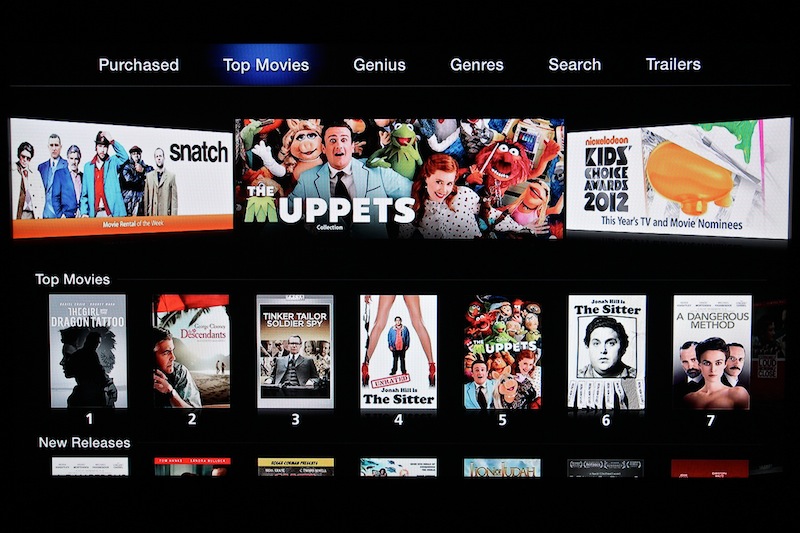


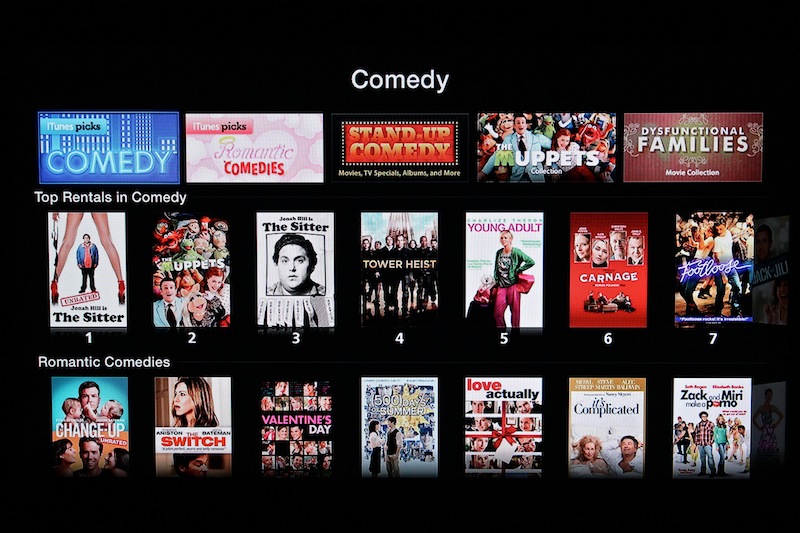














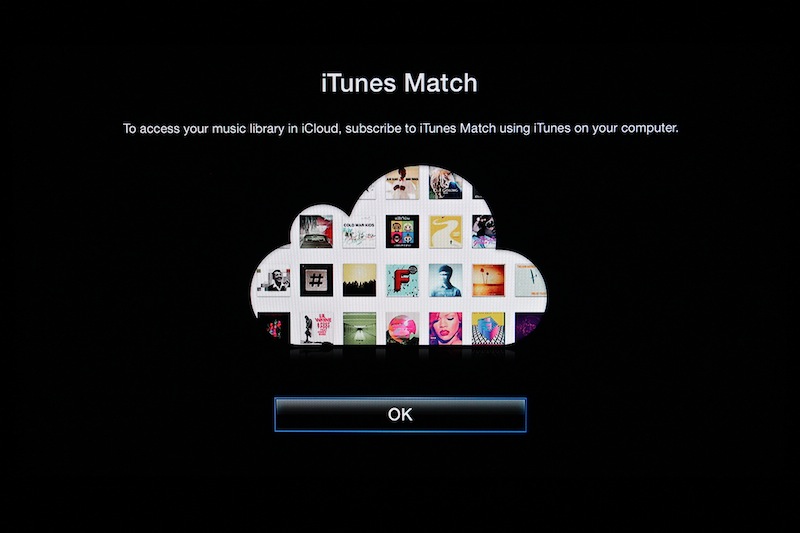

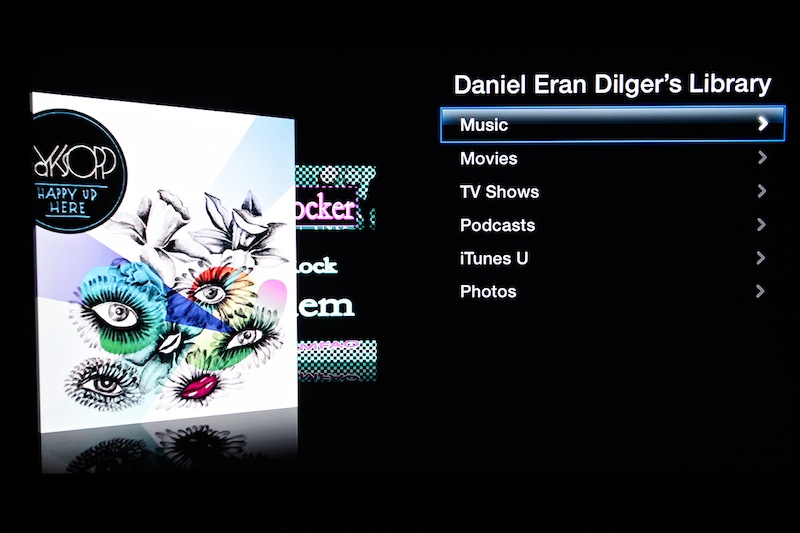



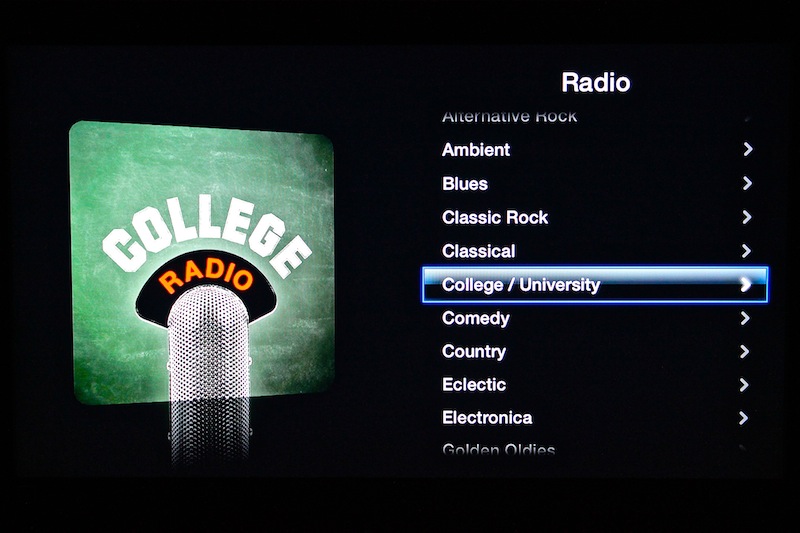
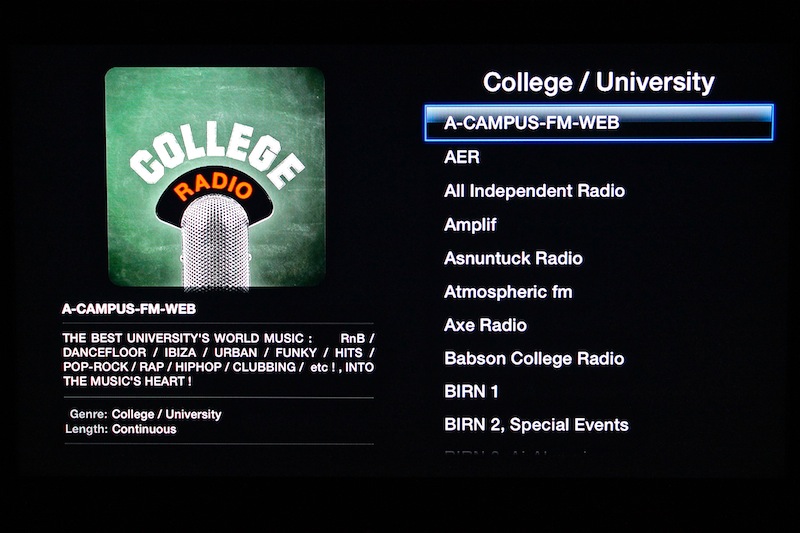
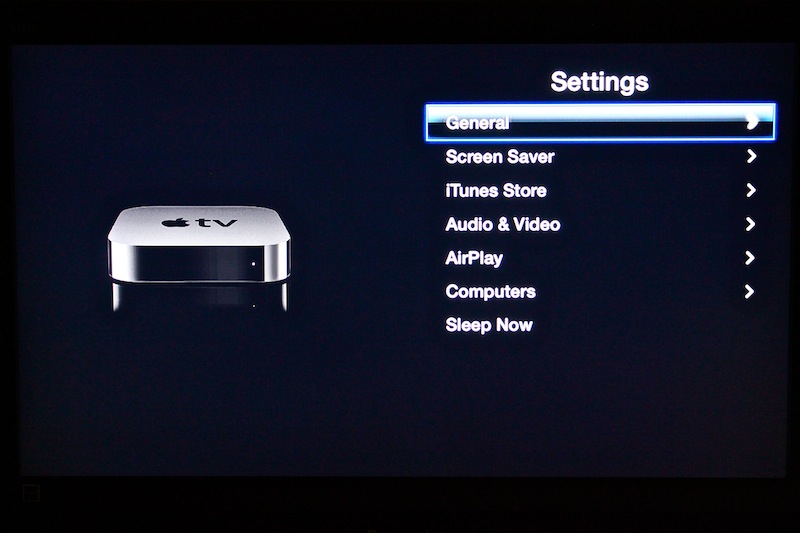




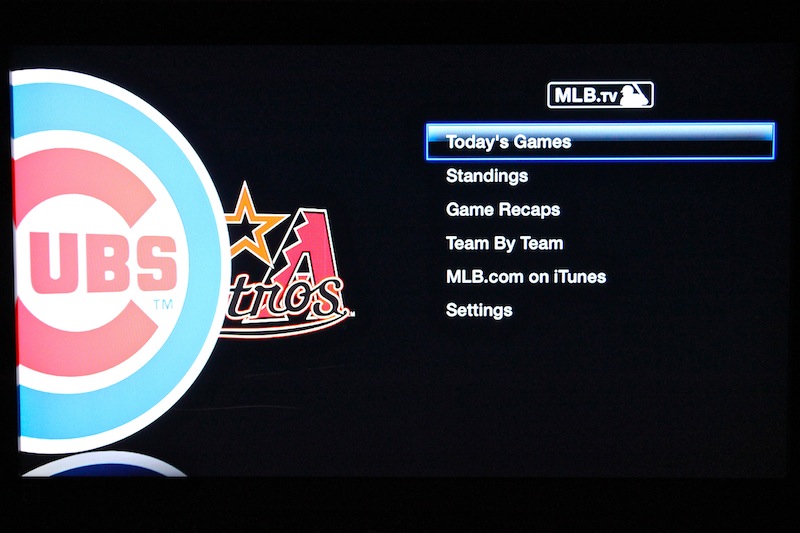




































 Amber Neely
Amber Neely
 Thomas Sibilly
Thomas Sibilly
 AppleInsider Staff
AppleInsider Staff
 William Gallagher
William Gallagher
 Malcolm Owen
Malcolm Owen
 Christine McKee
Christine McKee


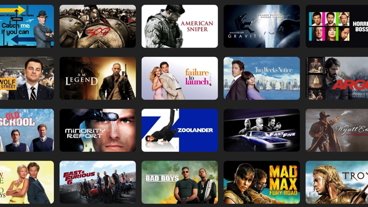






56 Comments
Someone's going to quote this whole article, aren't they?
The fourth image is what I believe they should've done with the UI, if not a direct iOS UI copy. It's a good update, though. Maybe we'll get Thunderbolt storage in the future?
Howard?
Howard?
I have watched 3d yoututube videos using the ATV2. On a standard TV the video shows two frames side by side. My TV will alternately display the two frames creating standard 3D this is not artifical 3D like in the article where the TV takes a 2D picture and tries to make it 3D. The latter process isn't very good. I also airplay from an ipad to display video that the the ATV can't access. Its a PITA but it works.
it would be nice if I could un-clutter the display by deleting the icons that I don't use.
Under "Other Apple TV advantages", the review (which I very much enjoyed reading) describes iTunes extras. I haven't been able to access these from apple tv - only from the mac. Am I missing something?
Thanks for mentioning the shatter effect. I've been trying to remember the name of this slideshow transition for weeks. Was it ever in apple tv? I was certain that it used to be but perhaps I'm just remembering when I used my mini as a HTPC.
I still think that airport express should add a match function, combined with the iOS remote app, to permit music to be played without a PC or streaming from the iOS device itself (which seems inefficient for battery and in-house bandwidth).